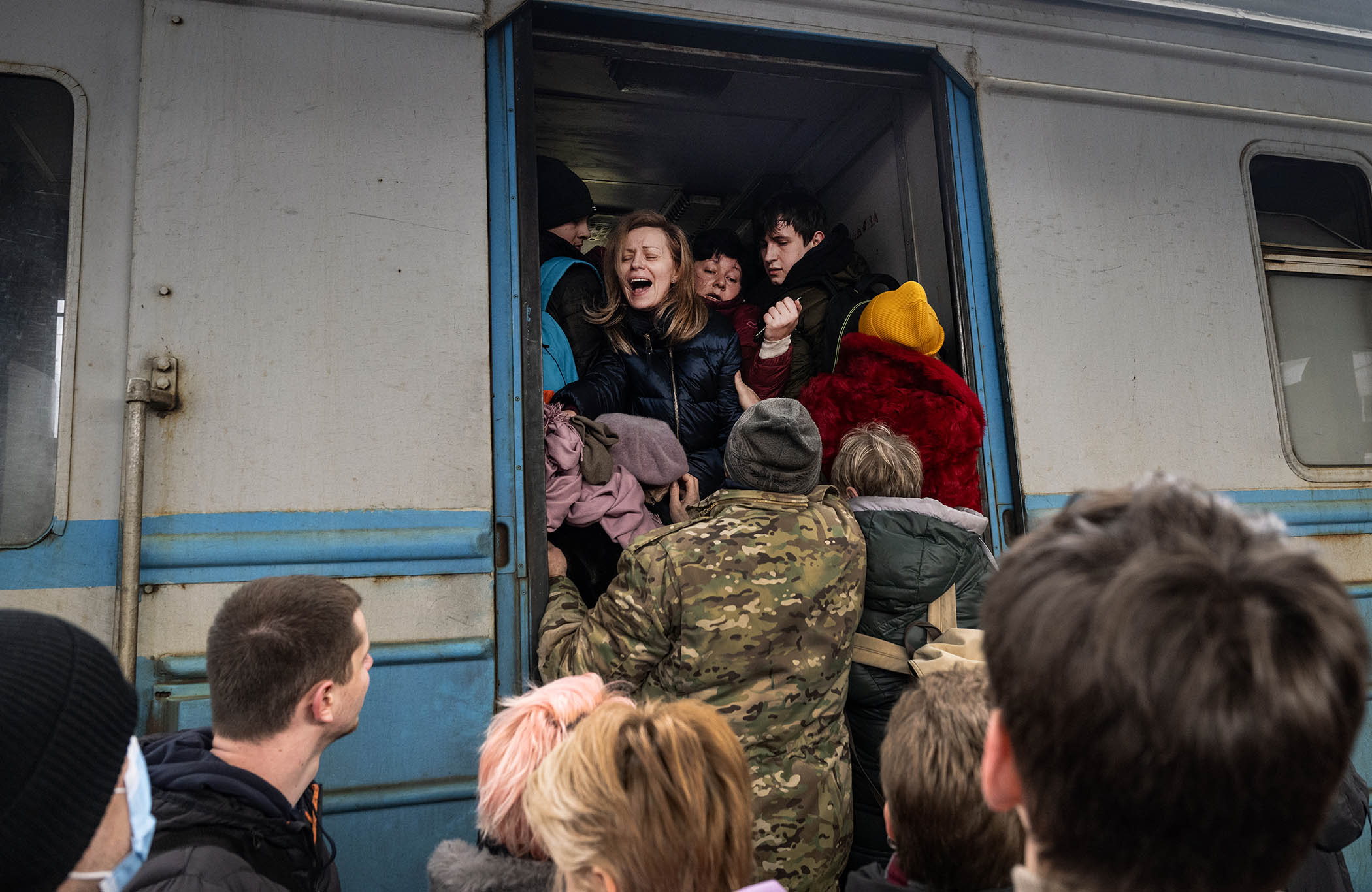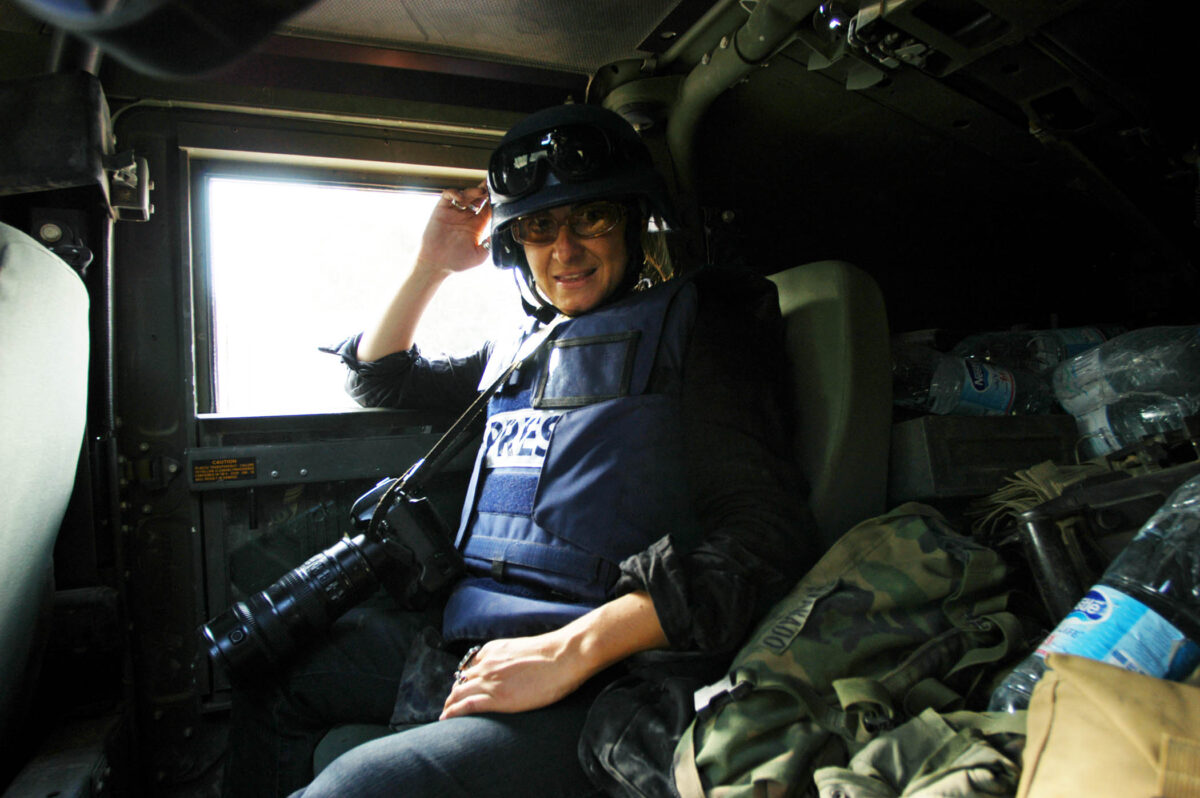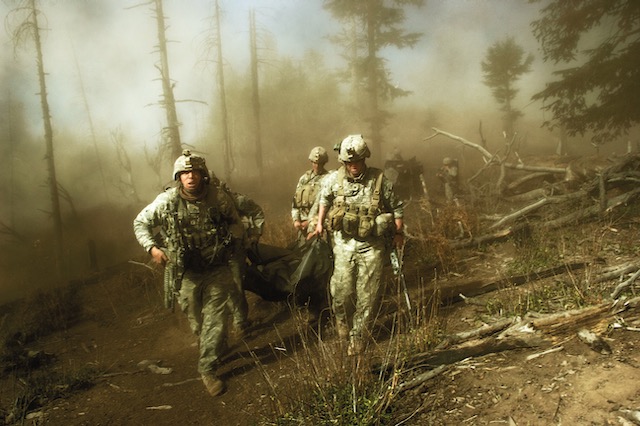After Recent Assignment in Ukraine, Photojournalist to Speak at FVCC in Kalispell
Developing relationships and reporting on people whose lives are regularly at risk requires Lynsey Addario to try and balance her professional standards with some of the personal feelings that inevitably form in the face of tragedy and struggle
By Mike Kordenbrock
When Lynsey Addario arrives in Kalispell to deliver a presentation at Flathead Valley Community College’s Wachholz College Center this Wednesday, she will be just about two weeks removed from her last stint in Ukraine, where since 2022 she has spent periods of time photographing Russia’s war against its western neighbor, and documenting life on the frontlines.
Addario’s career covering conflict and humanitarian crises began almost 25 years ago covering the American wars in Iraq and Afghanistan, and her work has brought her to places including Libya, Lebanon, Darfur, South Sudan, Somalia, the Democratic Republic of Congo, Yemen and Syria. At her upcoming event called, “It’s What I Do: A Life of Love & War,” she plans on delivering a wide-ranging talk about how she go into this particular subset of journalism, what motivates her, how her work gets done, and her relationships with people.

The talk will also include Addario’s “stories behind the stories,” including in relation to photos she has published in major publications like the New York Times or National Geographic. In addition to focusing on global conflicts, Addario, a Pulitzer Prize winner, has trained her attention on humanitarian, human-rights and women’s issues. In the course of her work, Addario has been kidnapped twice — once in Fallujah, Iraq, and another time in Libya — and she plans on discussing some of that experience as part of her talk. Some of the stories, and the images that Addario has used to tell them, aren’t easy to encounter.
“The content is difficult, because the subject matter is difficult,” Addario said. “I think that’s important for people to be aware of.”

The Kalispell event, which is part of the Wachholz College Center’s WCC speaker series, comes a little over two years since the New York Times published a front page photo of Addario’s which showed the chilling reality of the risks the war posed to Ukrainian civilians. The war was still in its early stages at that point, and in a headline for its “The Daily” podcast, the Times referred to Addario’s photo as a “defining” war photo.
The photo shows the bodies of a mother, her two children, and a family friend, all wearing puffy winter coats of differing colors, lying limp on the pavement, as Ukrainian soldiers attempt to render aid in the aftermath of a mortar strike. At the time, Russian President Vladimir Putin denied that the Russian military was targeting civilians fleeing battle zones, but Addario’s indicated otherwise.
Addario was close by when the fatal shell struck, and had been in the area documenting civilian evacuations from Irpin. As she told the “The Daily” podcast afterwards, she thought that she and the team she was working with would be safe because the Russians knew the area they were in was being used for civilians.
Two years into the war, Addario said that, alongside her daily assignments and feature stories about the war, she continues to try and find ideas that are new, and will continue to hold the attention of the international community. She has made between eight and nine trips to Ukraine, with those trips ranging in length from four to six weeks, as well as some additional shorter trips.
“I’m constantly struggling with how to do stories that still resonate with people,” she said.
Last summer, the New York Times Magazine published a visual essay of Addario’s called “A Boy’s Life on the Front Lines,” which detailed the life of 11-year-old Yegor, as he and his mother and 23-year-old half sister struggled to get by in a town near the eastern front of the war. At the time of Addario’s reporting, Yegor’s mother worked as a nurse’s aide, lab technician, and cleaner at a nearby hospital. The visuals incorporated into the story show scenes from a daily life that begins from a point of familiarity — routines like waking up to clean, cook, feed pets and get ready to work — and then progresses to show the indelible markings of war evidenced by the bombed out remains of Yegor’s school, and the bloodied, wounded soldiers which his mother tries to care for on a daily basis.
Developing relationships and reporting on people whose lives are regularly at risk requires Addario to try and balance her professional standards with some of the personal feelings that inevitably form in the face of tragedy and struggle.
“I have the luxury as a war photographer of being able to decide when I leave. And I think that I’m often in a situation where I’m afforded more protection, because I have, maybe, an armored vehicle, or I can pull back from the frontline,” Addario said.
In the case of Yegor and his mother, Lena, Addario described the two of them as not having the same options or support, even as the hospital where Lena worked, and where Yegor accompanied her regularly, was increasingly being targeted with artillery.
“I feel a sense of guilt, I feel a sense of the closer I get to people the more I want to help them, but of course as a journalist I’m not allowed to help them. The only thing I’m allowed to do is tell their story,” Addario said. “I was very lucky with them because Elena, the mother, knew the power of journalism, and she understood that, perhaps by sharing her story, it would give a sense of how so many people are living in Ukraine, and she felt comfortable with that. I think for me, personally, it’s very, very hard to go in and spend, you know, almost two weeks living with a family and then leave, and to hear that they’re still subject to this bombing and they may not survive. I think that’s something that I grapple with all the time.”

As far as what Addario has observed more recently in Ukraine, she said that she continues to see things she has seen since the beginning of the war, but that Ukraine is lacking in ammunition, and Russia is making gains across the frontline.
“I think there’s a real kind of fear right now. I also think that in the beginning of the war, as with any conflict I’ve covered, there was this sort of panic and frenzy to get out. It was total chaos, no one knew what to expect, there was a lot of uncertainty,” Addario said. “And now people have just fallen into this routine, we know Russia’s sort of playbook, we know they will hit schools, they will hit hospitals, they hit military targets, sort of everything is fair game. But the people who are there have made a decision that they want to stay in their country, so they’re staying there, and I think there’s an incredible resilience in the people, and that’s something I’ve witnessed since the first days of the war. Some things have changed, some things have not, but I think overall people are tired. They’re tired of being in this situation, but they’re resolved to continue fighting because they don’t want to be taken over by Russia.”
“It’s What I Do: A Life of Love & War” starts at 7:30 p.m. Wednesday, March 20, at the Wachholz College Center. For more information on the FVCC event, including to purchase tickets go to https://www.wachholzcollegecenter.org/Online/default.asp. The event is sponsored, in part, by the Broussard family, and tickets are free for students of all grade levels.